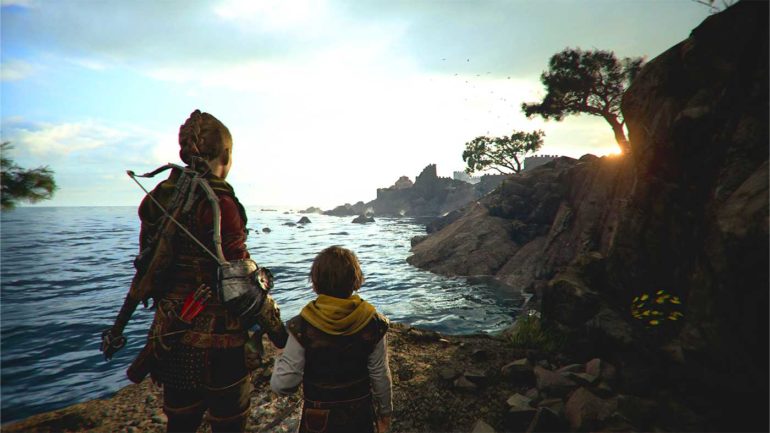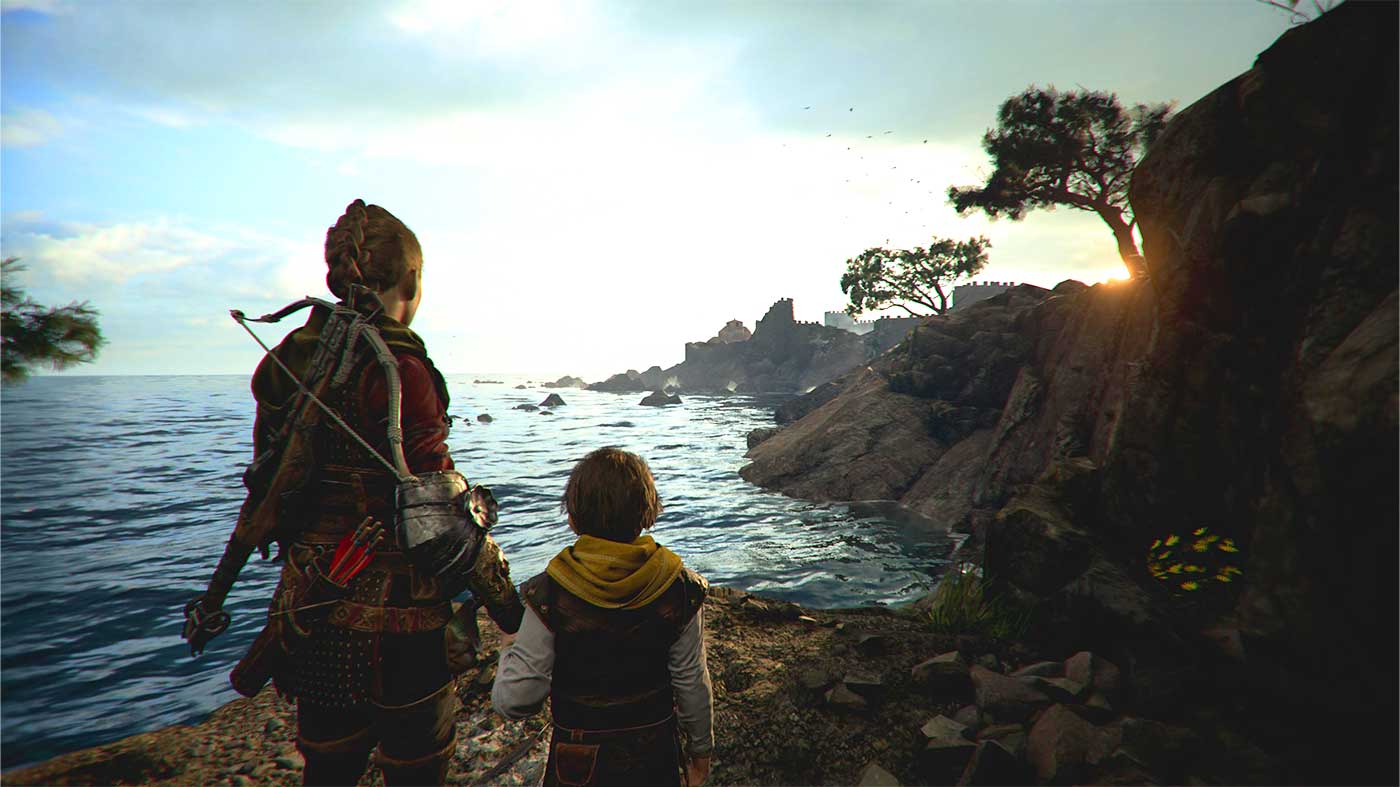NOTE: While this review doesn’t contain any major spoilers for A Plague Tale: Requiem, some discussed gameplay aspects of this sequel tie directly into the first game, so read on with caution.
A Plague Tale: Innocence came as a surprise to many. An ostensibly “AA” linear stealth-adventure game from a studio known mostly for its work on racing and licensed children’s titles, it won over critics and audiences alike with a compelling narrative and fresh ideas. Following it up was surely a tall order, but it’s one that Asobo Studio has risen to with great degree of success (and only a few slight missteps).
Requiem kicks off roughly six months after the events of Innocence, with Amicia and Hugo having left their devastated hometown of Guyenne in search of a new home, as well as a mysterious island in Southern France that Hugo has begun seeing in highly-symbolic dreams. Trouble follows the pair, naturally, and they soon find themselves separated from their mother and the alchemical student, Lucas, and instead greeted by the same horrific rat plagues and shady characters they’d been trying to forget in their travels.
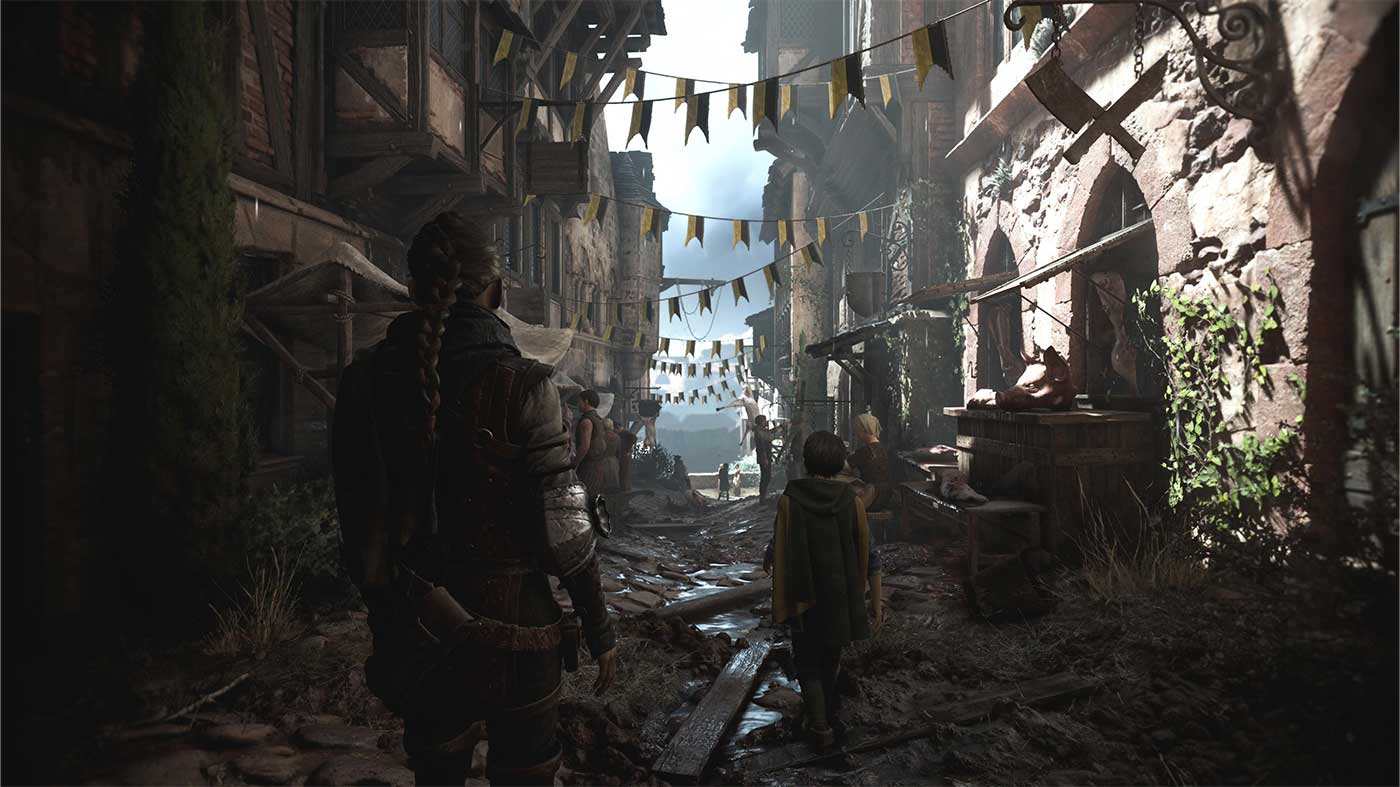
While it’s incredibly difficult to speak on the specific beats of this sequel’s narrative for fear of spoiling any of its twists and turns, it’s safe to say that it continues touching on many of the themes set up by the original game while introducing some compelling new ones and escalating events far beyond anything before. The studio has undoubtedly honed its craft in the years since the last game, making great use of the fantastic faux-historical grim fantasy setting to explore themes of family, morality and deification on a very personal scale that then unfolds to a surprisingly hectic finale that never loses sight of its beginnings.
THE CHEAPEST COPY: $79 FROM BIG W
Something that Requiem does differently and very well is pairing up its leads with a parade of new characters that each add their own dimension to proceedings. While interesting in their own right, a badass pirate named Sophia is a particular highlight, they also do a great job as supports to Amicia and Hugo’s continuing struggles. While I spent the first half of the game wishing Amicia would say anything that wasn’t fawning and concern over Hugo, that’s only because her own internal conflict as she wrestles with both her conscience and her sense of self makes her a compelling and empathetic character in her own right. The sibling bond that both share still makes for a great point of difference in this story and is highlighted at almost every narrative, visual and gameplay opportunity.
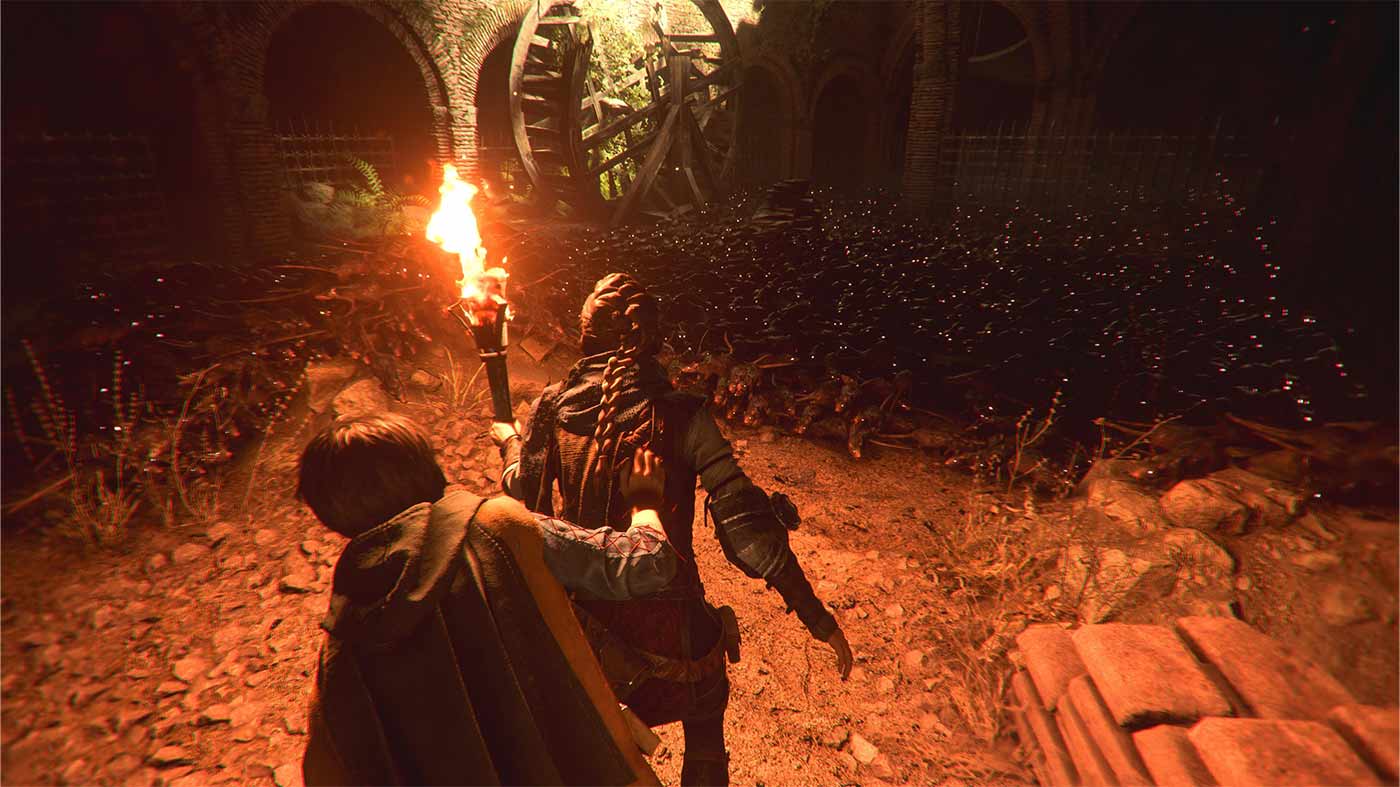
When it comes to making your way through this 12-15 hour journey, A Plague Tale: Requiem follows a similar blueprint set out by its predecessor. Namely, it’s a linear experience broken up into distinct chapters where you’ll spend equal amounts of time strolling through narrative sections, engaging in stealth/combat scenarios, solving environmental puzzles and enjoying high-octane set pieces – sometimes all at once. It’s your prototypical third-person action adventure format, then, but the team at Asobo has once again shown that they’ve a masterful handle on pacing and progression.
One thing I’m especially appreciative of is the way that Asobo approaches the escalating dangers of enemy encounters as the game goes on. Rather than throw more, tougher enemies at you over time and call it a day, each new situation brings with it new ideas or new spins on old ones and feels memorable in its own right as a result. Whether it’s new partner characters with their own unique abilities, new opportunities for Hugo to flex his ratty powers or unique environmental factors you’ll never go into a stealth or combat scenario feeling like you know what’s to come, and that’s fantastic.
Of course it wouldn’t be A Plague Tale without plenty of rats to contend with on top of everything else, and the same basic concepts from Innocence return here – namely you’ll spend plenty of time navigating poorly-lit environments through the use of fire so as to avoid being overrun by the light-averse rodents. Amicia’s entry-level alchemical skills once again see her combining various compounds to create, enlarge or extinguish sources of flame to help her and her companions get around. Environments are bigger and options are more plentiful across encounters and puzzles, which immediately increases the number of possible ways through each – something that the game does well over the more restrictive original.
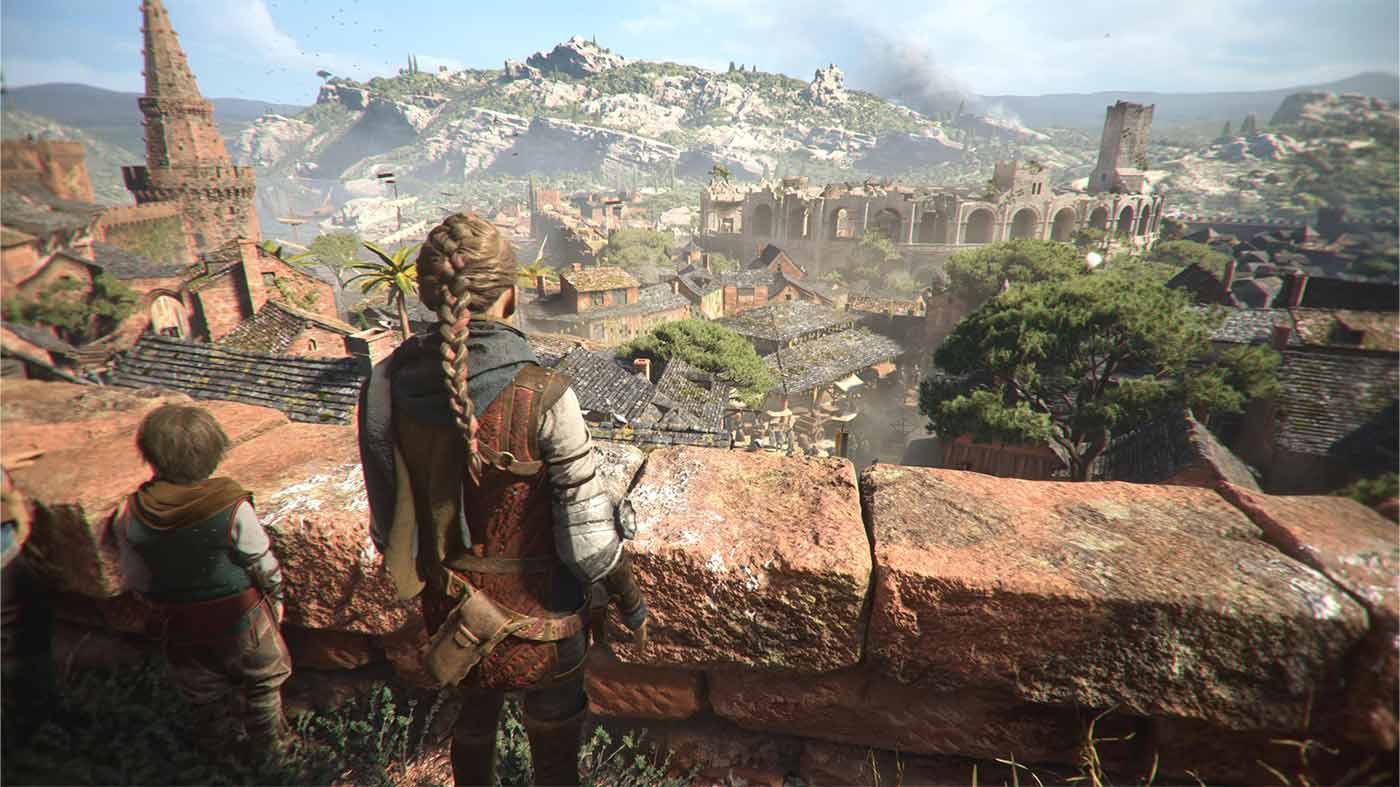
Requiem also adds a couple of crucial new tools, like the crossbow, to further augment the options both in puzzles and enemy or rat encounters, but like its narrative one of the best things it does is give Amicia and Hugo some new travelling companions with their own roles to play. Whether it’s commanding them to activate levers from afar or using their brute strength to manage soldiers in the open while you sneak around, the new and old faces along for the ride add a nice, occasional extra layer of gameplay that doesn’t over-complicate anything. Hugo’s ability to directly control small groups of rats, though not always available, is just as gloriously gross and satisfying as it sounds on paper as well.
I do have gripes, though they’re far from enough to stop me from giving Requiem my utmost recommendation. It mostly comes from a lack of communication – for example, Amicia can gain a handful of new skills that unlock via a kind of invisible XP broken up into three categories, and although it’s obvious that these are loosely based on stealth, direct combat and use of tools it’s near-impossible to know what the specific requirements are and how/where you’re fulfilling them. Similarly, there’s nothing in the way of a persistent codex or tutorial section to refer back to information presented throughout the game, which isn’t a huge issue in such a linear game but for anyone like me with the memory of a goldfish can lead to some frustration.

There’s also still a degree of stiffness to everything that can undermine both stealth play and head-on combat. Hiding under carts or tables, for instance, involves a rigid animation that ensures you can’t re-orient while hidden, and you’re also inexplicably unable to use Hugo’s enemy-detecting power, making it a far less useful tactic than it could have been. Likewise many of the close-quarters combat options like stunning enemies for a quick getaway feel clunky and involve the same, stilted animations each time which lessens their impact.
Outside of those occasional moments though, this is one handsome game. Asobo is clearly gunning for Naughty Dog in the beautifully-rendered linear adventure space and though it definitely doesn’t reach the emotive heights of the characters featured in the likes of The Last of Us, its landscapes are something else. From lush fields of flowers to desolate beaches and sprawling cities, this vision of Southern France is rendered with positively astonishing detail and backed up by sumptuous lighting whether it’s the beating Provencial sun or the light of a torch cutting through a foggy, rat-filled cavern. It’s a result borne more of labour than technology – every inch feels crafted and placed by hand – which makes for truly beautiful still frames but can sometimes be jarring in motion.
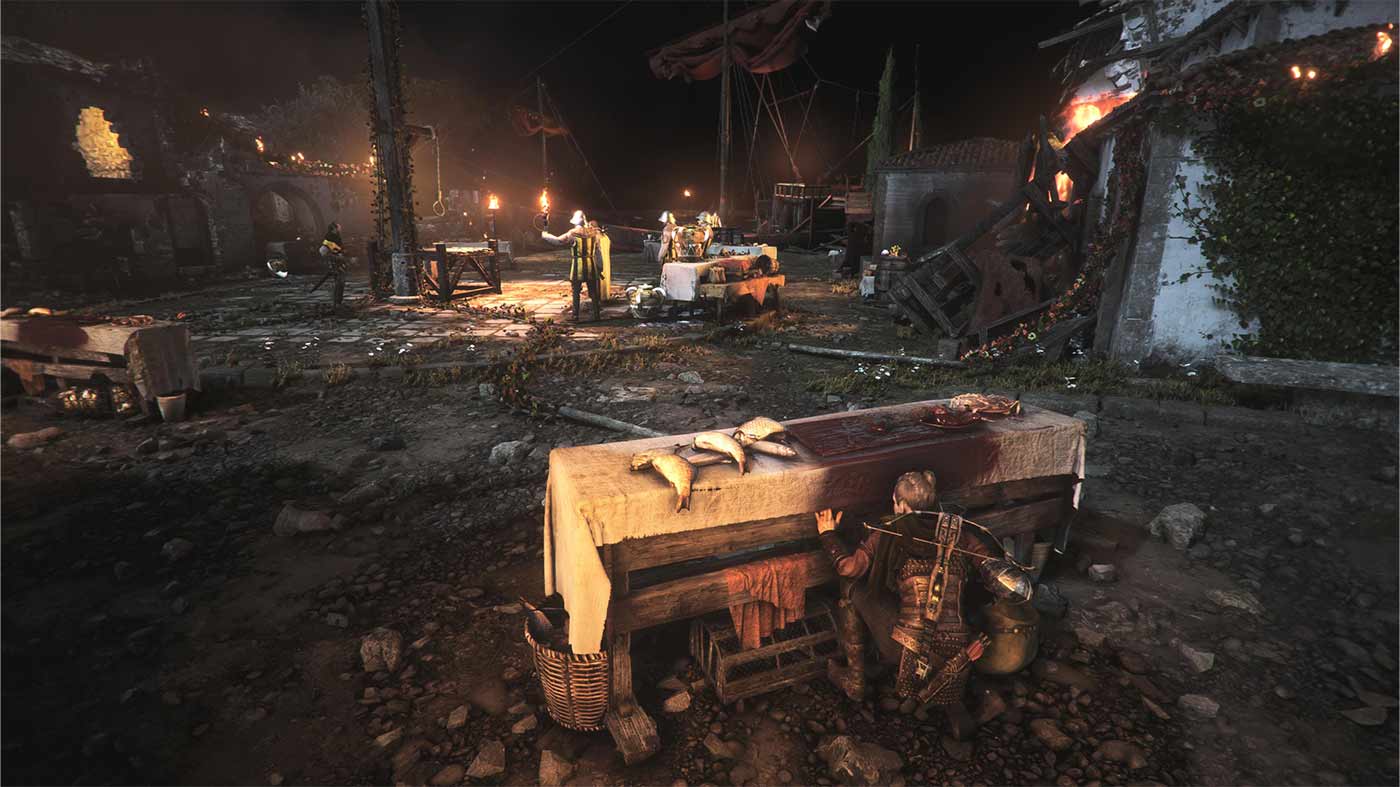
Performance especially is a concern, at least on the PS5 where I played through the game for review. It seems to target 60fps and gets there often enough, but it’s marred by frequent and massive dips to even sub-30fps territory which can be pretty uncomfortable to witness. It seems to be at its worst when atmospheric effects combine with multiple light sources and large swathes of rats, but given that those are core components of the experience that’s a little disappointing. PC players at least should be better off, and in fairness my impressions have come from the game pre-day one patch so hopefully the worst of it is resolved soon enough.
Olivier Deriviere returns once again with an exquisite score to underpin everything, pulling on just the right emotional (and literal) strings at any given time. From Gregorian choirs droning underneath sombre moments to a violence of violins cutting through the tension in close-stealth encounters you’re just as likely to be moved by Requiem’s musical backdrop as you are to forget it’s there – praiseworthy in both cases.
A Plague Tale: Requiem is, in totality, a grim and grisly affair that pushes the familial bonds and moral compasses of its characters in a frankly fucked up dark fantasy world and wraps it up in a compelling action adventure game that only slightly stumbles on its ambitions. Should Asobo return to this genre, or even this world, in future I’d love to see a few key improvements but this is still one of the year’s must-play titles.


